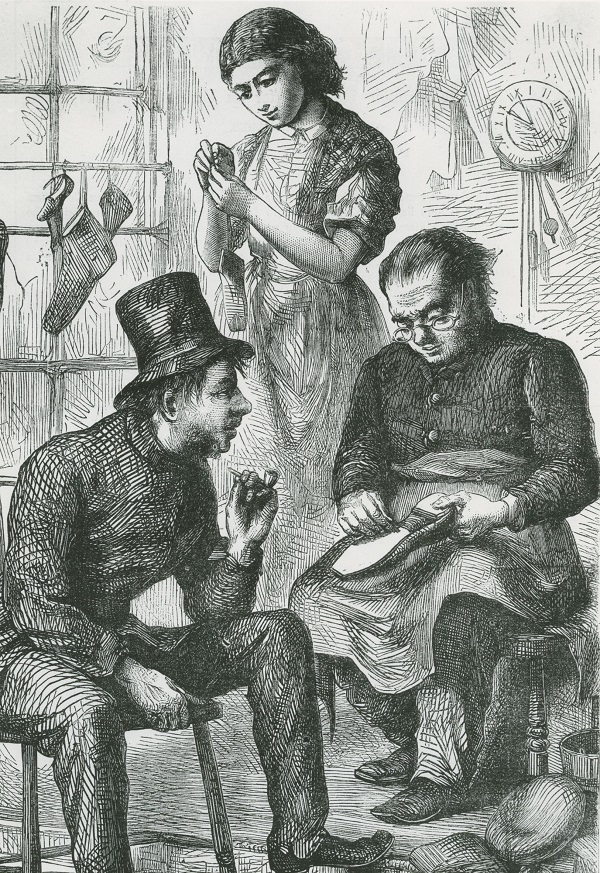Shoes
Northampton shoemaking - early beginnings

Black and white engraving the Northampton shoemaker, 1866
A long history
Northampton and the county has a long history of shoemaking. In the 12th century Northampton was a busy market town. It had a street of cordwainers (shoemakers) making footwear for the locals and was no different from other towns, but gradually things started to change.
Royal connections
Many wealthy and noble people stayed in the town or passed through including in 1213 King John who purchased a pair of boots in the town for 9d (4p). His son Henry III was a pious man - perhaps in response to his father’s behaviour – and chose from 1229 to give shoes to the poor at Christmas, Easter and Whitsun. Wherever he would be celebrating these feast days, eight towns including Northampton were ordered to supply up to 345 pairs. He continued to do this until in death in 1272.
The Guild
In 1401 Northampton’s Shoemakers Guild was established which laid down rules for shoemakers and had the powers to punish those whose work was unsatisfactory. The 1452 assizes (the court that administered civil and criminal law) regulated prices and weights for various shoemaking trades. By the 1600s Northampton had a small but recognised cottage shoemaking industry.
Why Northampton?
Why Northampton? Well the town had the advantage of possessing three crucial raw materials. Cattle for the leather and oak bark and water from the Rive Nene to use in the tanning process. Northampton was also within easy reach of London and other large towns where many people needed shoes. It was also a stopping off place on the drove road from Wales to London.
